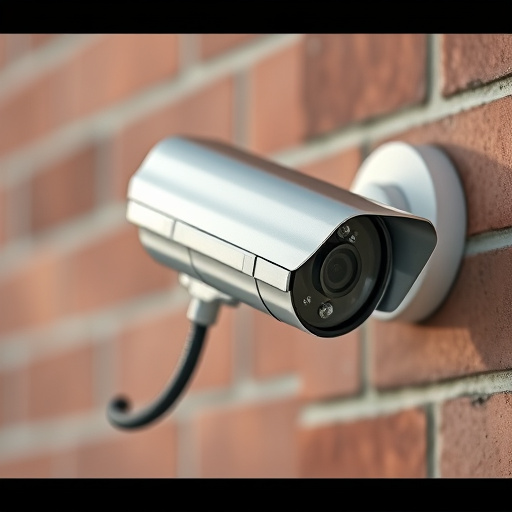Decoy cameras strategically placed in high-risk areas can effectively deter theft and vandalism by simulating real security equipment. The best placement is at entry points, windows, and merchandise displays, with realistic designs enhancing their visual impact. Combining these decoys with actual systems provides an extra layer of protection. Blending seamlessly with existing equipment or décor ensures they're hard to distinguish from real cameras. Positioning them near high-value items or vulnerable areas enhances deterrence, with successful applications in retail stores reporting significant drops in shoplifting. Regular movement or replacement maintains their realism, discouraging criminal activity.
Convincing decoy cameras have emerged as a powerful tool in the fight against theft. By strategically placing realistic fake security cameras, businesses can significantly deter criminal activity while maintaining an aesthetic environment. This article explores the multifaceted benefits of decoy cameras, delving into best practices for their placement, choosing the right design, and real-world success stories. Discover how these subtle yet effective deterrents are transforming security measures, offering both peace of mind and cost savings. Uncover the optimal locations for maximum visual impact—the secret lies in understanding human behavior and leveraging environmental design.
- Understanding the Power of Decoy Cameras: A Disguised Deterrent
- Key Considerations for Effective Placement: Maximizing Visual Impact
- Choosing the Right Type and Design: Blending in with the Environment
- Real-World Applications: Success Stories and Best Practices
Understanding the Power of Decoy Cameras: A Disguised Deterrent
Decoy cameras, when strategically placed, can be a highly effective deterrent against theft and vandalism. These fake security devices mimic real surveillance equipment, sending a powerful message to potential criminals that they are being watched. The mere presence of decoys can significantly reduce the likelihood of an incident occurring, acting as a psychological barrier for would-be thieves.
The best placement for fake security cameras is in areas where valuable assets or sensitive information are located. Entry points like doors and windows, as well as high-theft zones within a store or business, are ideal spots. These decoys should be positioned to provide broad coverage, ensuring that any intruder would have to navigate through several lines of sight, making their actions more visible and detectable.
Key Considerations for Effective Placement: Maximizing Visual Impact
When considering the best placement for fake security cameras as a theft deterrent, it’s crucial to maximize their visual impact. Positioning them in high-visibility areas like entry points, windows, and merchandise displays sends a clear message to potential thieves. Strategically placing these decoy cameras on walls, ceilings, or even within store mannequins can create an environment where criminals feel constantly observed, deterring them from attempting any illegal activities.
Additionally, the realistic design of modern fake security cameras plays a significant role in their effectiveness. High-resolution models that mimic genuine surveillance equipment’s appearance are more convincing and thus, more likely to discourage theft. Combining these visually compelling decoys with actual security systems can further enhance the overall security posture, providing an extra layer of protection for businesses and properties.
Choosing the Right Type and Design: Blending in with the Environment
Choosing the right type and design of decoy cameras is crucial for effective theft prevention. These fake security cameras, often referred to as dummy or mock-up cameras, come in various forms, from sophisticated models that mimic real camera lenses to simpler versions that look like simple sensors. The best option is one that blends seamlessly with its surroundings, making it hard for thieves to distinguish between genuine and decoy. This means selecting a design that matches the existing security equipment or décor of the location you’re trying to protect.
When deciding on the best placement for fake security cameras, consider areas where actual cameras are already present but not visible from the street or easily accessible. For instance, mounting them on ceilings, inside cabinets, or in corners can make them less conspicuous while still providing a strong deterrent. Additionally, positioning them near high-value items or vulnerable entry points can enhance their effectiveness in safeguarding against theft.
Real-World Applications: Success Stories and Best Practices
In real-world scenarios, decoy cameras have proven to be an effective deterrent against theft and vandalism. Success stories abound in retail stores, where strategically placed fake security cameras significantly reduce shoplifting incidents. For instance, a study by the National Retail Federation revealed that nearly 63% of retailers reported a decrease in theft after implementing visible surveillance systems, with many attributing this success to decoy cameras.
The best practices for deploying these devices involve selecting high-traffic areas and prominent locations where potential thieves are most likely to strike. Entrances, exits, and open shelves are ideal spots, as these are common points of access or vulnerabilities in store layouts. Additionally, ensuring the decoys look realistic and blending them seamlessly with genuine security equipment enhances their effectiveness. Regularly moving or replacing the fake cameras also maintains their illusion, keeping would-be criminals guessing and deterring them from targeting the establishment.
Convincing decoy cameras have proven to be an effective deterrent against theft, as their strategic placement can mislead potential criminals. By understanding the key considerations for optimal positioning, selecting the right design that blends with the environment, and learning from real-world applications, businesses can maximize the benefits of fake security cameras. When implemented correctly, these decoys can serve as a powerful visual signal, enhancing overall security measures and creating an impression of vigilance. Remember, the best placement for fake security cameras is where they appear genuine but are strategically positioned to deter criminal activity.
